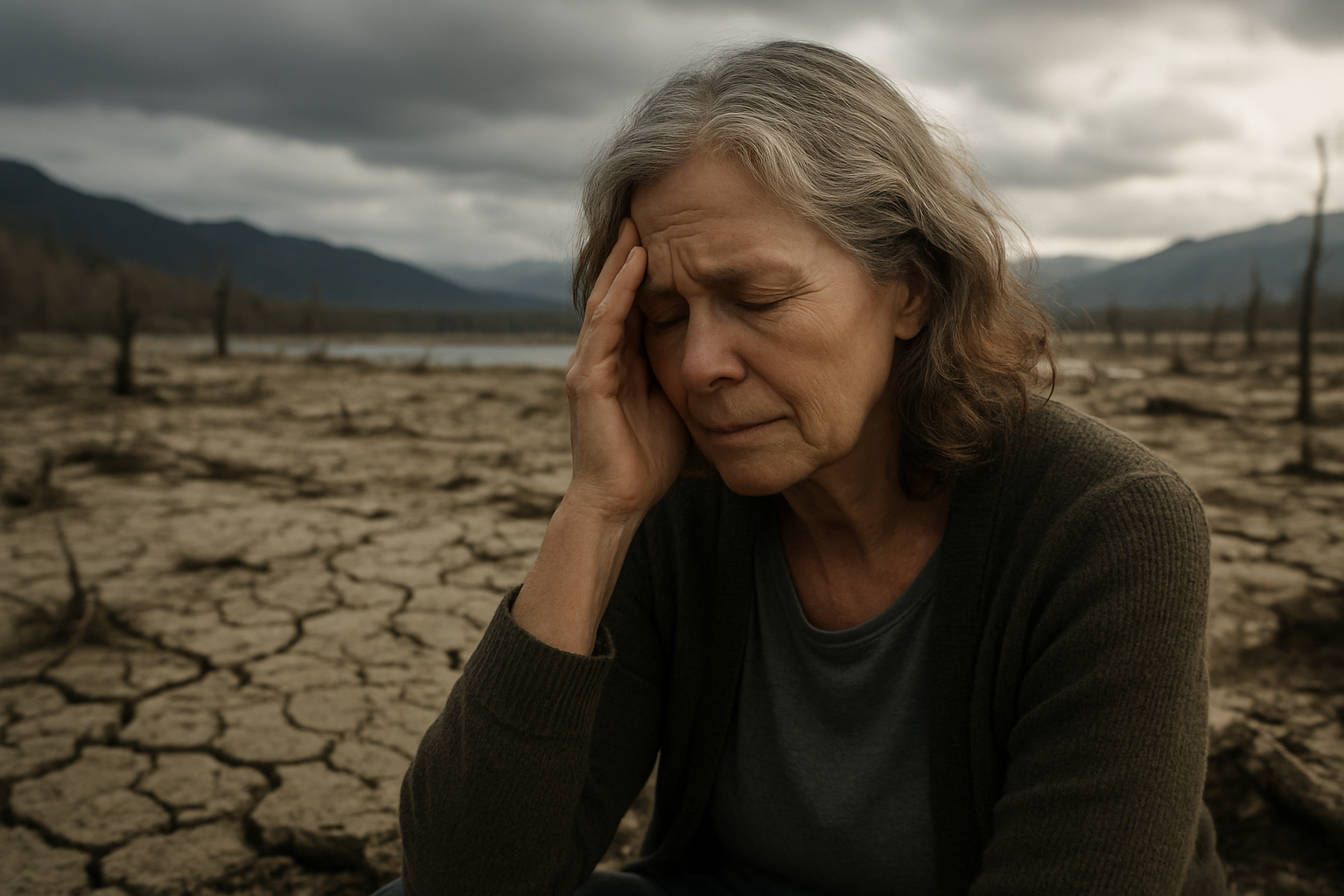Solastalgia: The Emotional Toll of Environmental Change
The growing phenomenon of solastalgia is reshaping our understanding of mental health in the face of climate change. This emerging concept explores the profound distress caused by environmental transformations in our home environments. Read below to delve into the complexities of solastalgia and its increasing relevance in our rapidly changing world.

The Genesis of Solastalgia
The concept of solastalgia emerged from Albrecht’s observations of communities in New South Wales, Australia, who were grappling with the impacts of long-term drought and large-scale open-cut coal mining. These residents expressed a deep sense of loss and powerlessness as they witnessed the transformation of their once-familiar landscapes. Albrecht recognized that this distress was distinct from other forms of eco-anxiety and deserved its own classification.
Solastalgia combines the Latin word solacium (comfort) with the Greek root -algia (pain) to create a term that encapsulates the anguish of losing the solace once found in one’s environment. This neologism has since been embraced by researchers, psychologists, and environmentalists as a valuable framework for understanding the psychological impacts of environmental degradation.
The Psychological Mechanisms of Solastalgia
At its core, solastalgia is rooted in our deep psychological connection to place and the environment. Humans have an innate tendency to form attachments to their surroundings, a phenomenon known as place attachment. When these familiar environments undergo rapid or dramatic changes, it can trigger a profound sense of loss and disorientation.
Research in environmental psychology suggests that solastalgia operates through several key mechanisms. First, it disrupts our sense of place identity, which is crucial for psychological well-being. Second, it undermines our feeling of environmental mastery, as changes beyond our control alter our ability to navigate and predict our surroundings. Lastly, it can lead to a sense of discontinuity, where the present environment no longer aligns with our memories and expectations.
Manifestations of Solastalgia in Contemporary Society
As global environmental changes accelerate, instances of solastalgia are becoming increasingly common and diverse. In coastal communities, rising sea levels and erosion are literally washing away people’s homes and livelihoods, leading to profound feelings of loss and anxiety. In urban areas, rapid development and gentrification can transform neighborhoods beyond recognition, leaving long-time residents feeling alienated in their own communities.
Climate change-induced shifts in weather patterns are also triggering solastalgia. Farmers watching their lands turn to dust due to prolonged droughts, or arctic communities seeing their ice-based cultures melt away, experience deep-seated distress as their way of life becomes untenable. Even subtle changes, like the disappearance of certain bird species or shifts in seasonal patterns, can evoke feelings of solastalgia in those attuned to their environment.
The Broader Implications of Solastalgia
The recognition of solastalgia has significant implications for how we approach environmental policy, mental health, and community planning. From a policy perspective, understanding the psychological impacts of environmental change highlights the urgent need for climate action and sustainable development practices. It underscores that environmental degradation is not just an ecological issue but a profound human one as well.
In the realm of mental health, solastalgia challenges practitioners to consider environmental factors in their assessments and treatments. It calls for new therapeutic approaches that address the unique distress caused by environmental change and help individuals build resilience in the face of an uncertain ecological future.
Coping Strategies and Community Responses
As awareness of solastalgia grows, individuals and communities are developing strategies to cope with and mitigate its effects. Environmental education programs are helping people understand and process the changes they’re witnessing. Community-based initiatives, such as local restoration projects or climate adaptation planning, provide avenues for action that can alleviate feelings of powerlessness.
Some communities are embracing the concept of soliphilia, another term coined by Albrecht, which describes the love of and responsibility for a place and its people. This proactive approach encourages individuals to engage in stewardship of their local environments, fostering a sense of agency and connection even in the face of change.
Solastalgia represents a critical intersection of environmental and mental health concerns in our rapidly changing world. As we continue to grapple with the realities of climate change and environmental degradation, understanding and addressing solastalgia will be crucial for maintaining individual and community well-being. By recognizing the profound connections between our environments and our emotional states, we can work towards creating more resilient and adaptive communities in the face of ongoing ecological challenges.





